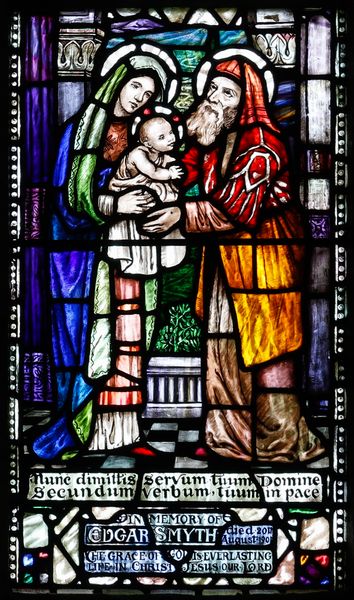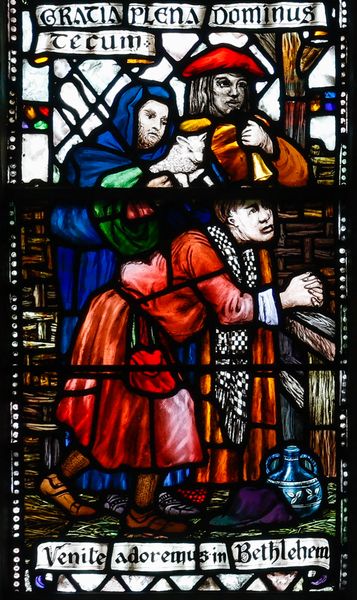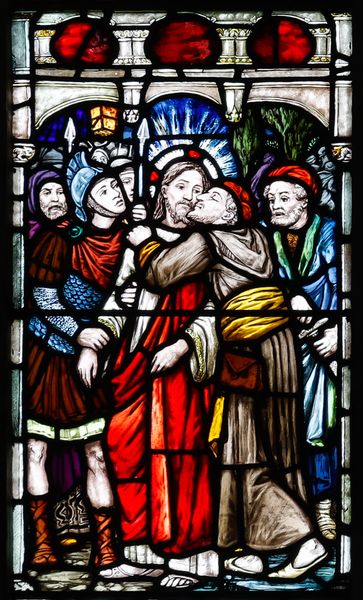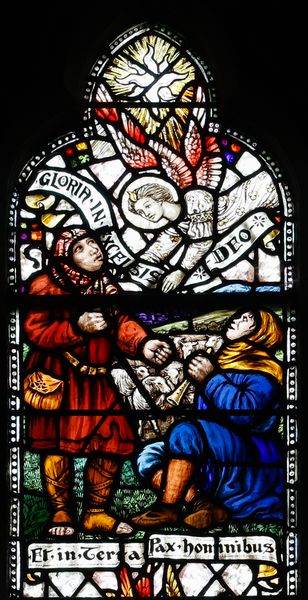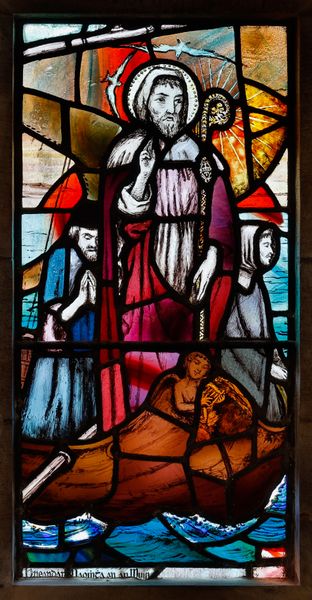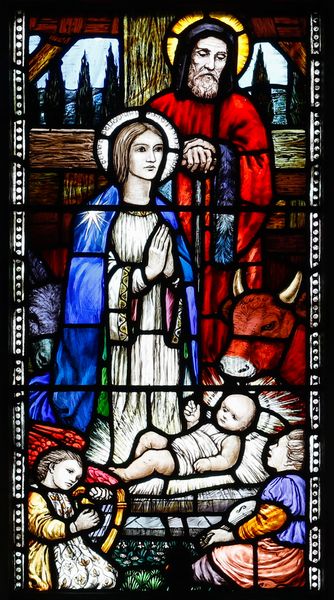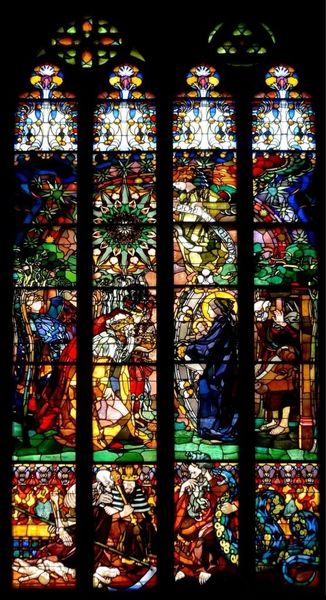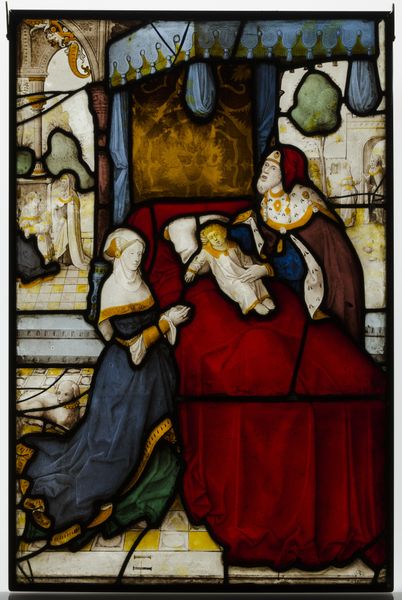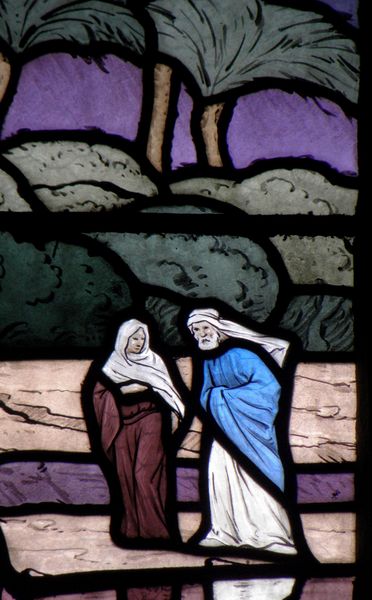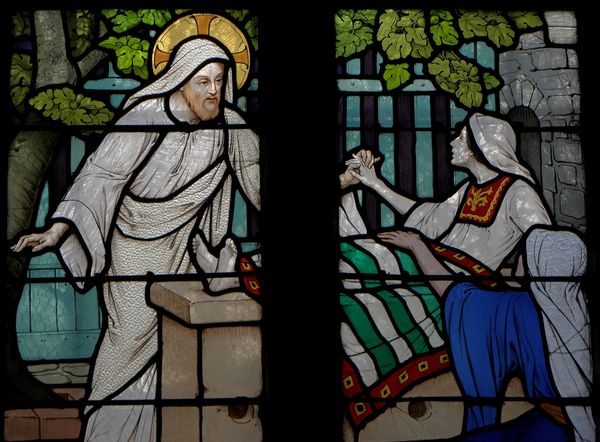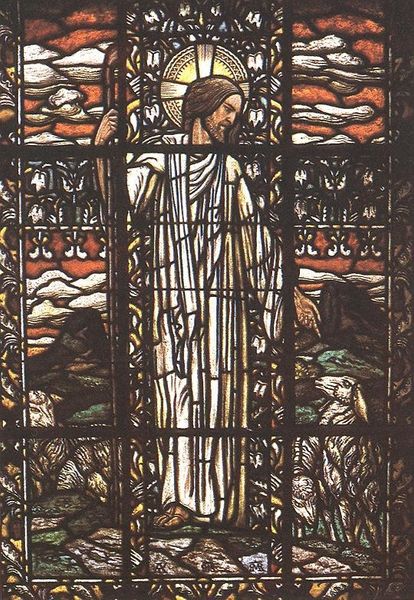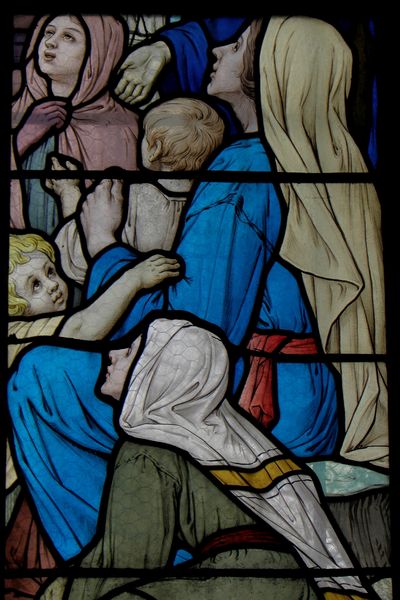
stain, glass
#
medieval
#
stain
#
narrative-art
#
figuration
#
glass
Copyright: Public domain
Editor: Here we have Sarah Purser's stained glass window, "Loughrea St. Brendan's Cathedral," created in 1908. I'm struck by how the intense colours are held together by those black lead lines. What can you tell me about this artwork? Curator: Let's consider this work not merely as a window, but as a produced object. How does the context of early 20th century Irish nationalism and the Arts and Crafts movement influence its creation and reception? Editor: Well, the text at the bottom makes it pretty clear that this panel commemorates a person - it says "In Memory of Marion Chichester"... Curator: Precisely! Commemoration necessitates material production. The choice of stained glass, a medieval medium revived by the Arts and Crafts movement, speaks volumes. Think about the labour involved – from sourcing raw materials like sand and metallic oxides for the glass, to the skilled craftsmanship of cutting, painting, and assembling. The use of glass also had strong social connotations for use in institutional environments like churches, but with memorial texts could be bought for private consumption, as well. Editor: I see your point. So, it's not just about the religious narrative, but also the socio-economic aspect of production? Curator: Absolutely. How does the visual style, with its flattened perspective and bold outlines, reference earlier medieval glasswork, connecting it to ideas of Irish cultural identity? Does it connect Ireland with European traditions, and, therefore, 'civilization?' The inclusion of the dedicatory plaque places the spiritual figures next to earthly concerns, blurring divisions between high art and craft production. Editor: That makes me rethink the role of the artisan. They are not only craftspeople, but producers who give shape to historical events through their labor. Curator: Exactly. By examining the material processes and cultural context, we can challenge traditional notions of authorship and value, appreciating both its devotional intention and the cultural factors that allowed the work to exist in the first place. Editor: It's amazing to look at a single artwork as a kind of meeting point of historical forces and individual decisions of making and craftsmanship! Curator: Indeed, the material conditions and craft processes offer important, even underappreciated, insights into understanding a work of art.
Comments
No comments
Be the first to comment and join the conversation on the ultimate creative platform.
